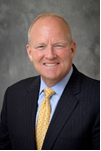Embracing Evolution
There are very few good leaders who dive headlong into change without some caution, yet at the same time we know that in order to fulfill our mission, we must EVOLVE to make progress. To meet our goals and succeed in achieving long term relevance, sustainability and impact, nonprofits need to continue to refine technology, human resources, communication strategies and approaches to donor engagement.
At The Fedcap Group we are driving into the future with our eyes on the following high level goals:
- Every company of The Fedcap Group achieves clearly defined corporate health indicators.
- Every company of The Fedcap Group is supported to meet or exceed contractual, regulatory and compliance standards.
- Every company of The Fedcap Group has assets that must be leveraged in order to amplify our ability to achieve significantly improved outcomes within our five major focus areas: youth in transition from foster care, children ages 0-6, adults with disabilities, the previously incarcerated and individuals on public assistance.
- The Fedcap Group continues to develop and implement solutions that impact the design and delivery of government services—shifting the overall outcomes of the system.
In order to accomplish these major goals, we have spent a considerable amount of time ensuring company leaders are fully engaged and onboard and understand their role in achieving success. We are investing in the staff of the organization through new efforts to listen and learn from their perspectives. We are upgrading our technology to provide staff with state-of-the-art tools required to effectively monitor program outcomes and finances. And we are engaging our community of donors in very specific ways around our future. In other words…we are evolving.
In “Creating Change: A Brave Path Forward for Nonprofits,” Jessica Haynie and Vicki Pozzebon, reporting in North Carolina State University’s Philanthropy Journal, stresses the importance of creating forums where leaders are able to talk openly about the pressing questions and/or issues that are blocking them from moving forward. This kind of self-check is critical. We have spent a tremendous amount of time over the past several years clarifying expectations, laying out and refining our major areas of focus, building more effective communication strategies, and supporting leaders in their ability to effectively lead. These conversations are not always easy, but they are imperative.
We have also engaged partners in very dynamic ways. The bigger the goal, the more important the partnerships.
Paula Schneider president and CEO of Susan G. Komen, the leading breast cancer organization, suggests in a Forbes Nonprofit Council post, that nonprofits need to work together for real change. “As much as we’d like to think our nonprofit organizations are uniquely equipped to change the world, we can’t always do it on our own.” She believes “partnerships are an essential part of our existence. It takes everybody rowing in the same direction, tackling each project hand in hand and focusing more on reaching our common goals than on who gets credit for the effort.”
This has proven to be true for The Fedcap Group. To make the kind of systemic changes needed to significantly improve outcomes for our target populations requires strategic partnerships—moving from fractured systems to integrated and seamless pathways to getting the right services at the right time.
Evolution is not always easy—but it is imperative for organizations who want to make a difference.


